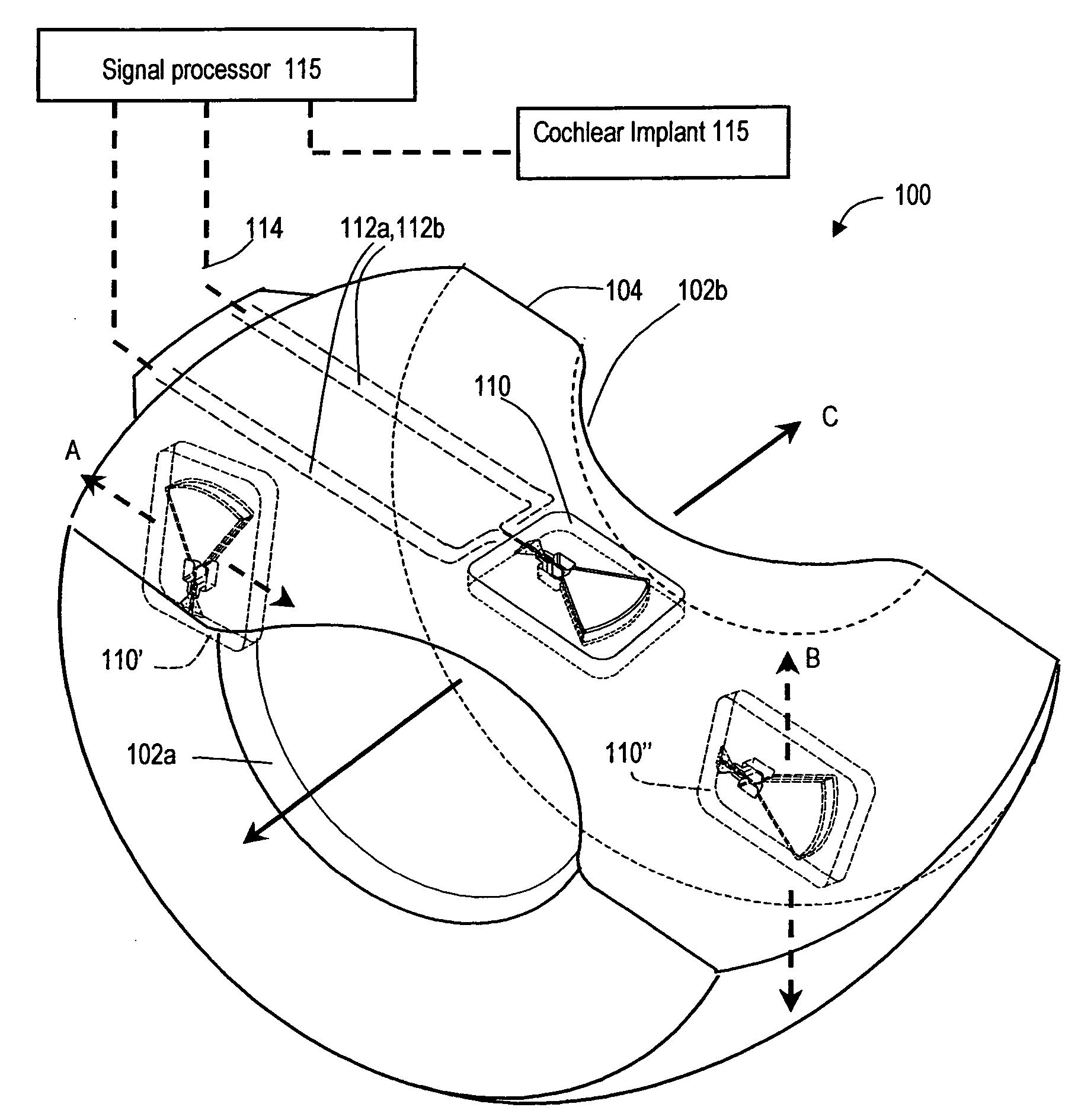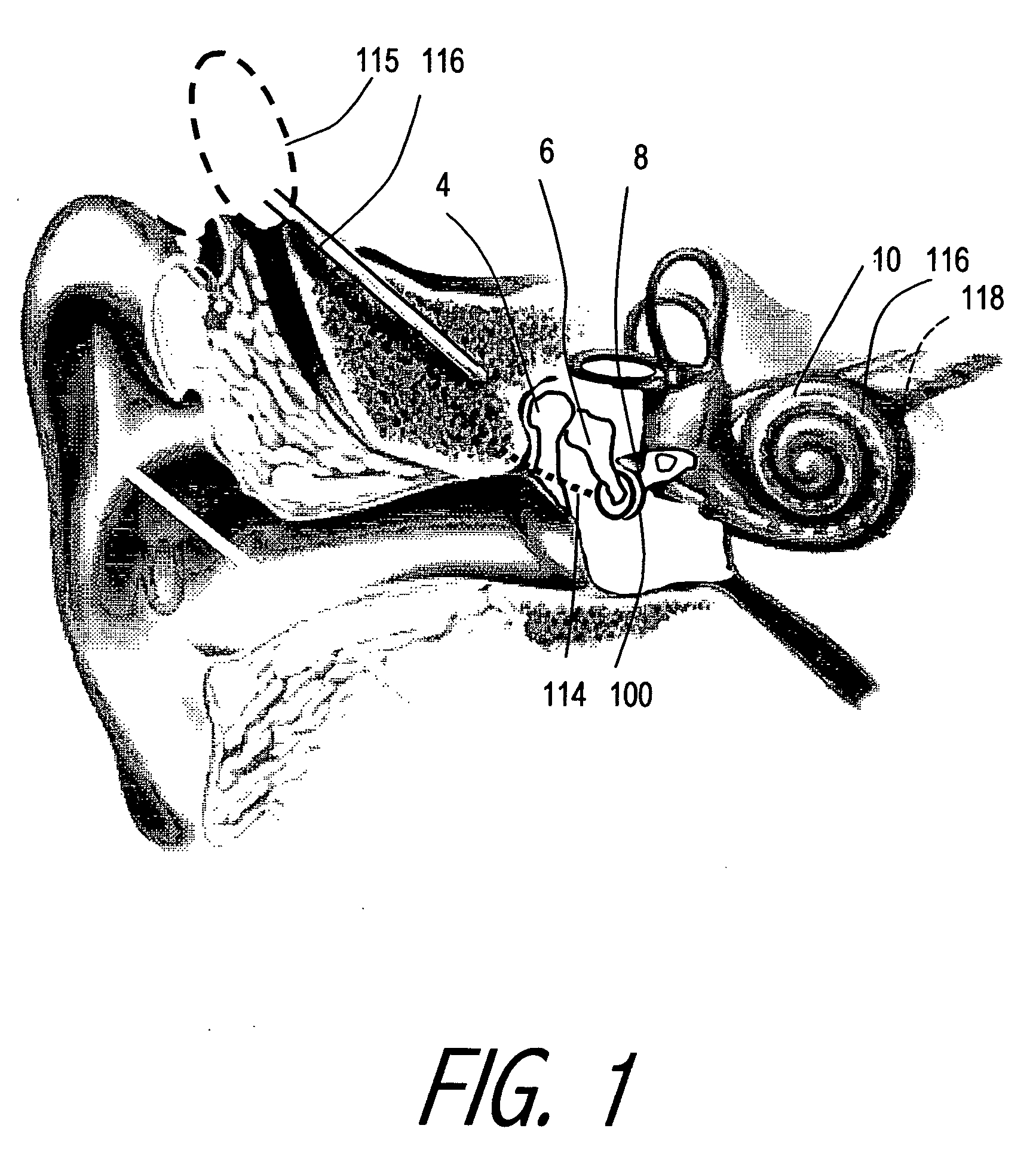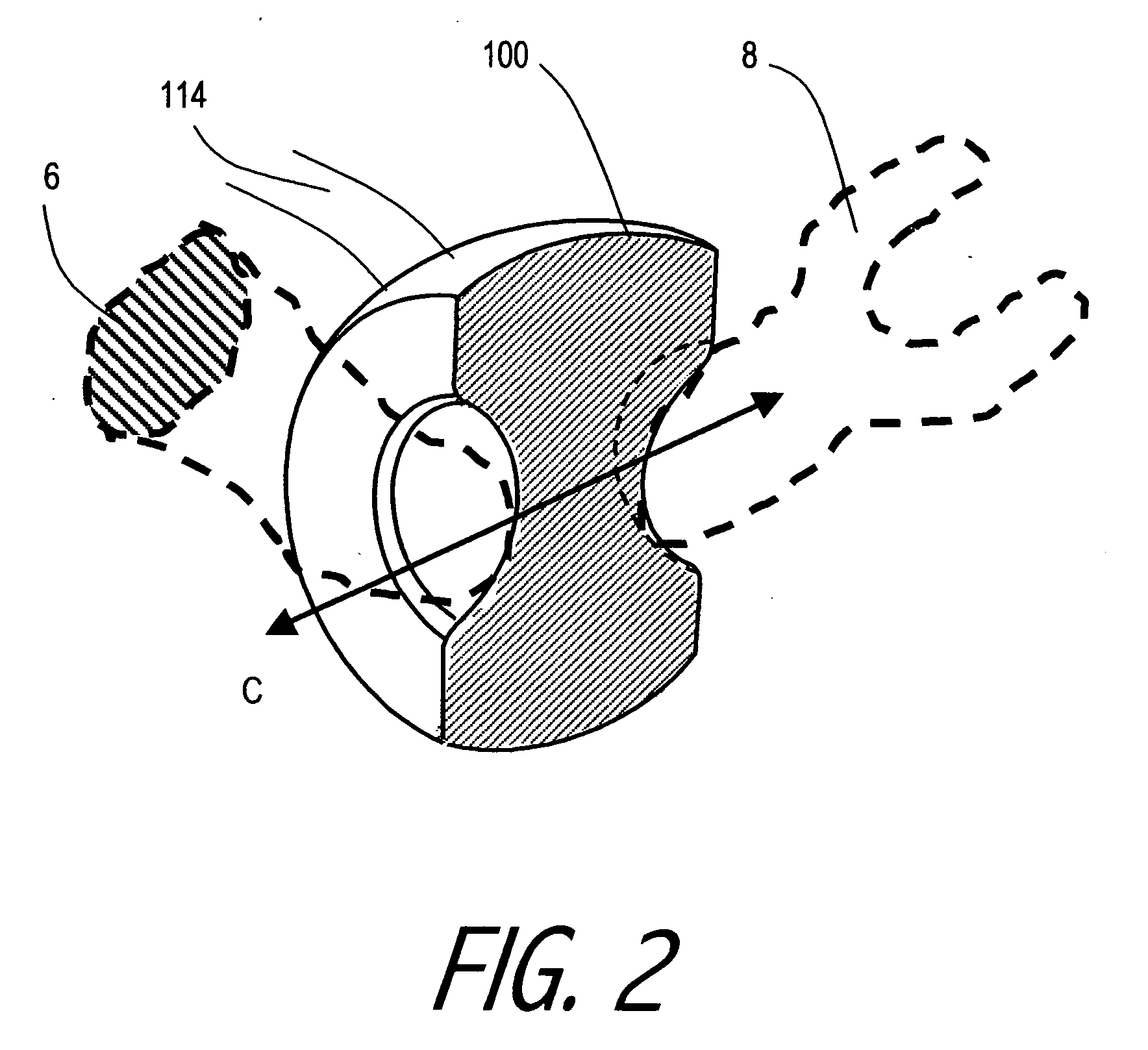Hearing implant with MEMS inertial sensor and method of use
a technology of inertial sensor and hearing implant, which is applied in the field of hearing implant with inertial sensor and method of use, can solve the problems of hair cell damage, hearing impairment, and the inability of the auditory system to transform acoustic,
- Summary
- Abstract
- Description
- Claims
- Application Information
AI Technical Summary
Problems solved by technology
Method used
Image
Examples
Embodiment Construction
[0019] 1. Type “A” implant with MEMS inertial sensor. An exemplary Type “A” implant 100 corresponding to the invention is illustrated in FIGS. 1 and 2 that is adapted for implantation between the incus and stapes. In general, the Type “A” embodiment of the invention is based on piezoresistive sensing of the displacement of a seismic mass in response to vibration in the ossicular chain. The acoustic sensor is fabricated by a MEMS process. The term MEMS (micro-electrical mechanical systems) describes the integration of mechanical elements, sensing elements and electrical elements on a common silicon substrate through microfabrication technology. While the electronics are fabricated using integrated circuit (IC) process sequences (e.g., CMOS, Bipolar, or BICMOS processes), the micromechanical components are fabricated using compatible micromachining processes that selectively etch away parts of the silicon wafer or add new structural layers to form the mechanical and electromechanical ...
PUM
 Login to View More
Login to View More Abstract
Description
Claims
Application Information
 Login to View More
Login to View More - R&D
- Intellectual Property
- Life Sciences
- Materials
- Tech Scout
- Unparalleled Data Quality
- Higher Quality Content
- 60% Fewer Hallucinations
Browse by: Latest US Patents, China's latest patents, Technical Efficacy Thesaurus, Application Domain, Technology Topic, Popular Technical Reports.
© 2025 PatSnap. All rights reserved.Legal|Privacy policy|Modern Slavery Act Transparency Statement|Sitemap|About US| Contact US: help@patsnap.com



